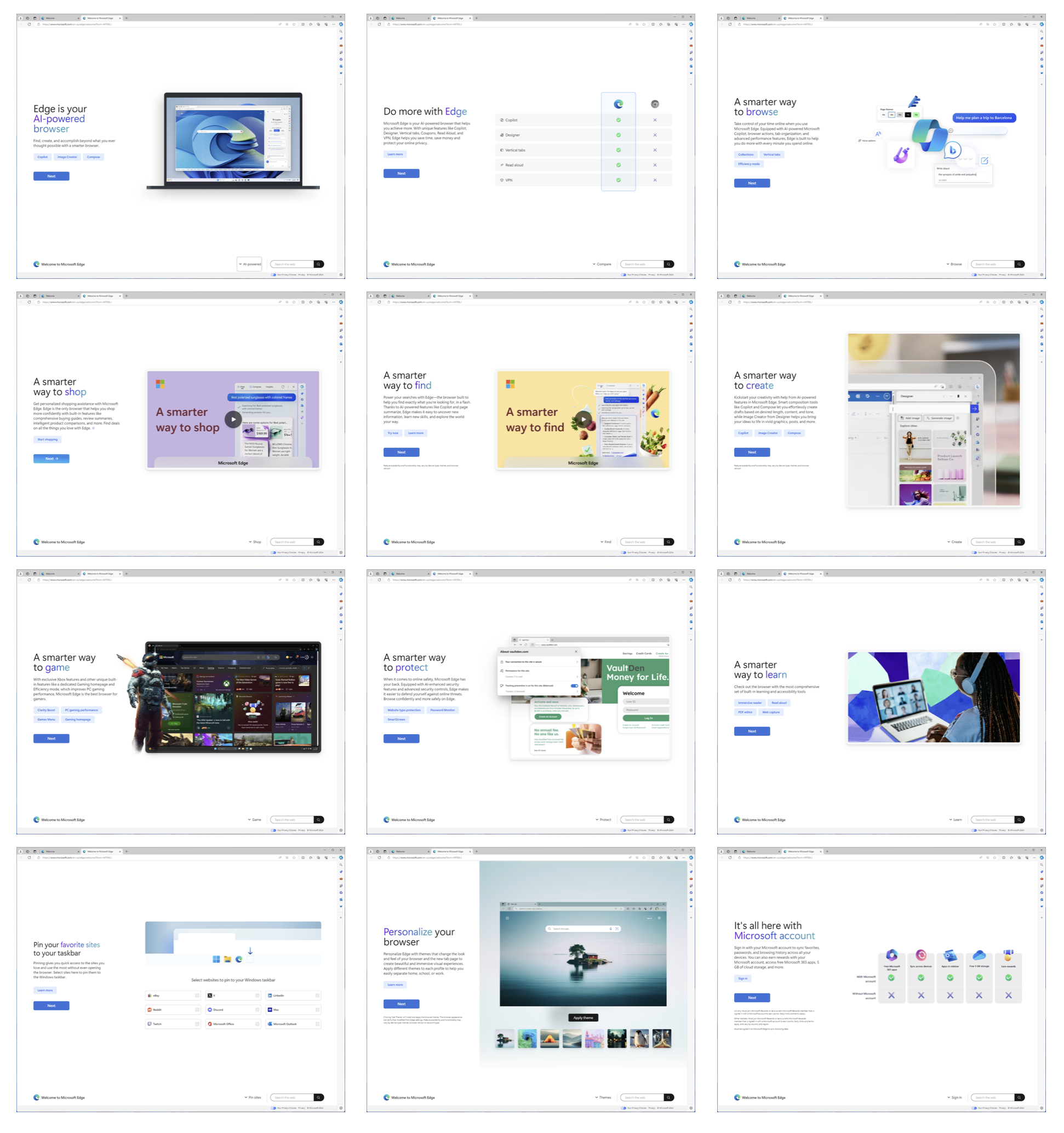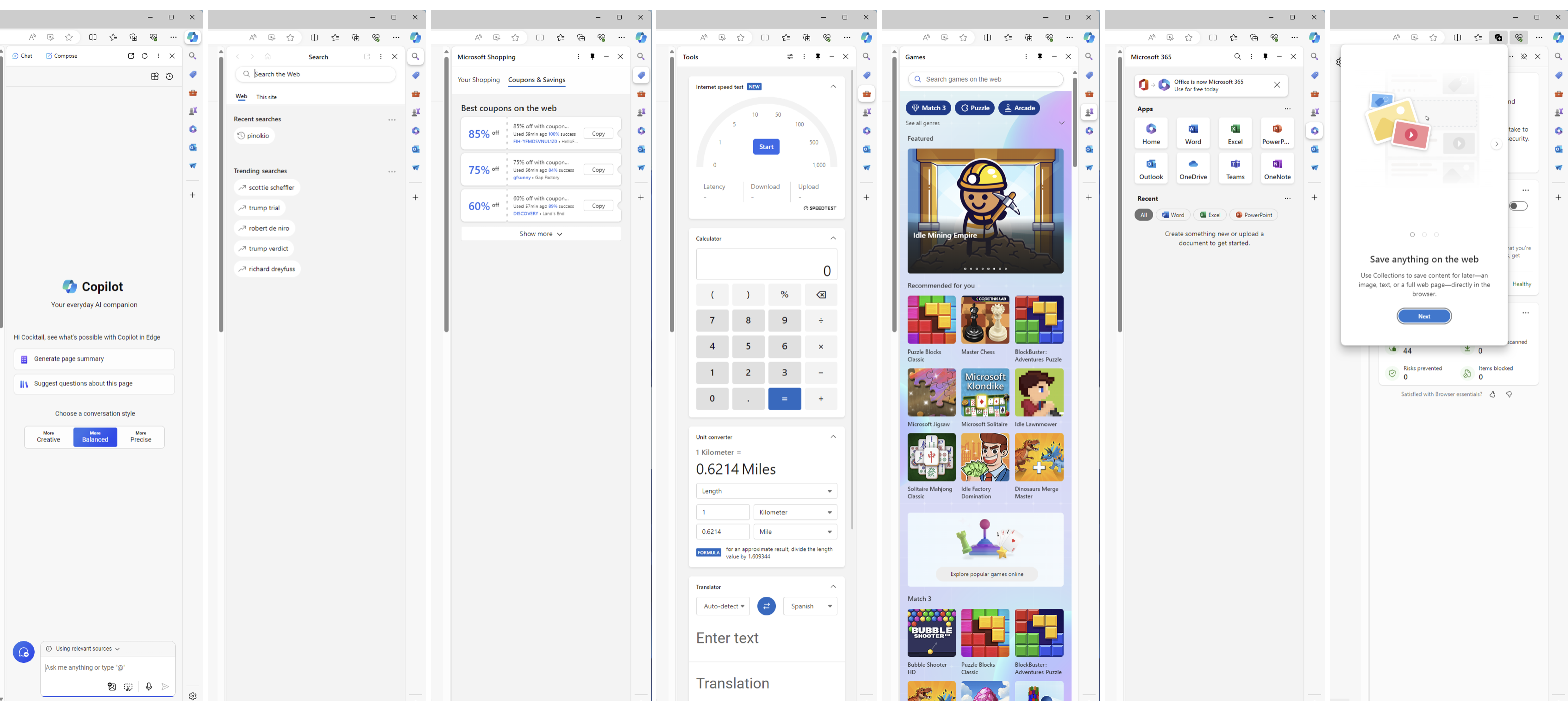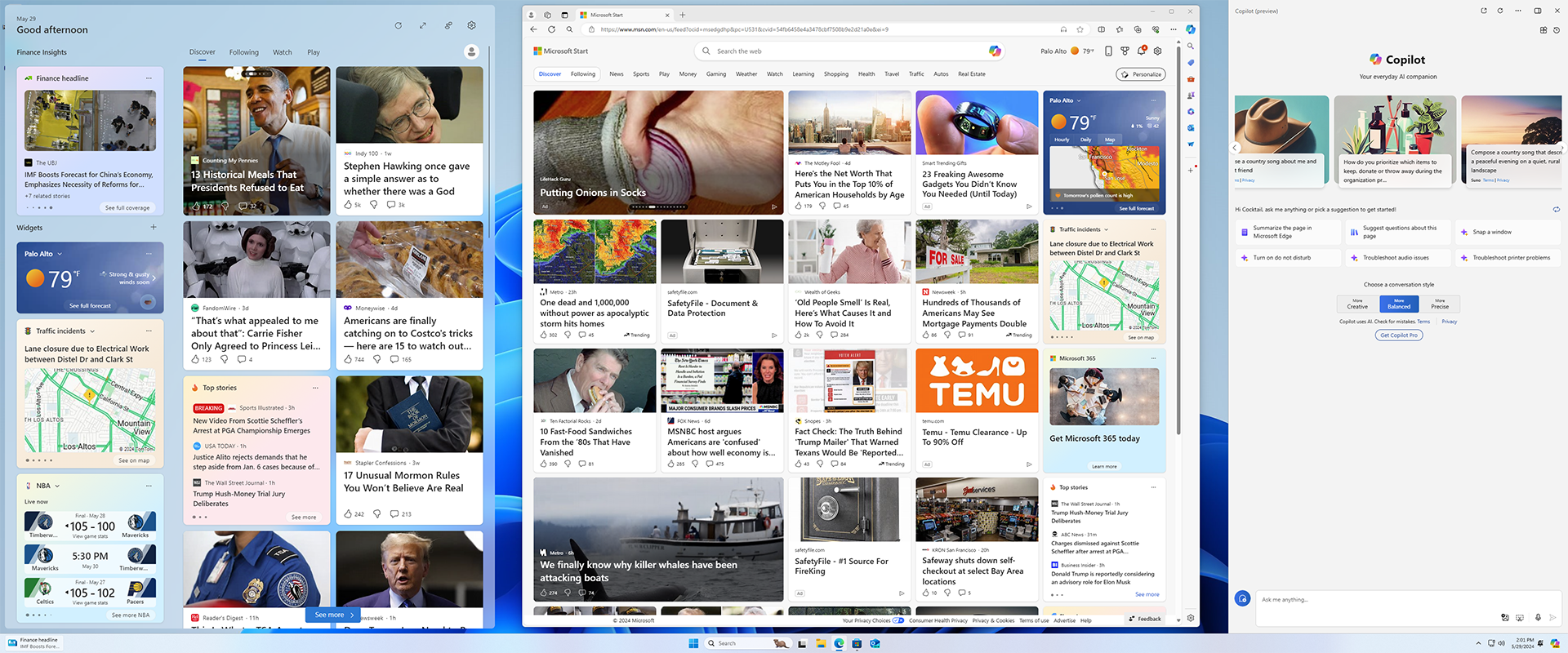As more companies embrace new AI-enabled capabilities, a commonly held position is that established players will "win" by integrating AI features into their existing platforms and products. But the more established these companies are... the more competing interests they face when doing so.
Consider Microsoft's Web browser Edge and its start-up experience. Edge is now your AI-powered browser. But it's also your way to browse, shop, find, create, game, protect, learn, pin, personalize, sign-in, import, sync on the go, and discover. In other words, any new AI feature faces stiff competition from all the other existing features that are still vying for people's attention and use. (Lots of internal team objectives to hit at Microsoft)
Sure, the AI features are mentioned first but they're likely tuned out and skipped over like all the other browser features being promoted during setup. After years of being asked to adopt sign-in, shopping, syncing, personalization and more, people have learned to ignore and dismiss marketing messages especially when they come as fast and furious as they do on Windows.
And it's not just setup. Once you start using Edge, the right side-panel is loaded with icons. Of course, the most brightly colored icon is the AI feature but it's right there alongside search, shopping, tools, games, Microsoft 365, Outlook, Drop, Browser essentials, Collections, and more. Once again the effect is to tune it all out. Too much, too often. And the new AI features fare the same as all the existing features.
Looking beyond Edge, the same issues persist across Windows. Yes, there's a new AI feature icon but it's competing with Windows Start, Microsoft Start, and god knows what else (after a while I was afraid to click on anything else).
Contrast this situation with new products and companies that start with AI capabilities at their core. They don't have a laundry list of pre-AI features competing for attention. They are not beholden to the revenue streams and teams behind those features. They can build from the ground up and use AI-based capabilities to build the core of their offering leading to new paradigms and value adds.
Of course, new entrants don't have massive user bases to leverage. But often a large existing user base is a disadvantage, because adoption of new features isn't earned. Bolt on an AI feature to existing user base and some subset will try it or use it. The numbers "look good" but even turkeys fly in hurricanes.
Building from the ground up means you have to earn each user by providing value not just promotions. But it also means you're creating something valuable if people decide to come and especially if they stay. When you're integrating features, it's often harder to tell.


